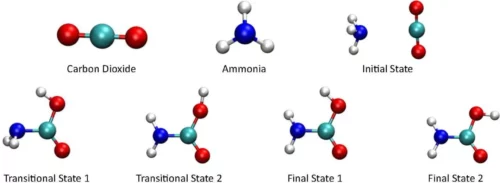Researchers have developed a quantum computing algorithm to find useful amine compounds for carbon capture.

The amount of carbon dioxide in the atmosphere increases daily with no sign of stopping or slowing. Too much of civilization depends on the burning of fossil fuels, and even if we can develop a replacement energy source, much of the damage has already been done. Without removal, the carbon dioxide already in the atmosphere will continue to wreak havoc for centuries.
Researchers from the National Energy Technology Laboratory and the University of Kentucky deployed an algorithm to study amine reactions through quantum computing. The algorithm can be run on an existing quantum computer to find useful amine compounds for carbon capture more quickly.
“We can try to find a new molecule to do it, but if we want to test it using classical computing resources, it will be a very expensive calculation. Our hope is to have a fast algorithm that can screen thousands of new molecules and structures,” said author Qing Shao.
Any computer algorithm that simulates a chemical reaction needs to account for the interactions between every pair of atoms involved. Even a simple three-atom molecule like carbon dioxide bonding with the simplest amine, ammonia, which has four atoms, results in hundreds of atomic interactions. This problem vexes traditional computers but is exactly the sort of question at which quantum computers excel.
However, quantum computers are still a developing technology and are not powerful enough to handle these kinds of simulations directly. This is where the group’s algorithm comes in: It allows existing quantum computers to analyze larger molecules and more complex reactions, which is vital for practical applications in fields like carbon capture. An existing quantum computer cab run the algorithm to find useful amine compounds for carbon capture more quickly, analyzing larger molecules and more complex reactions than a traditional computer can.
Reference: “Description of reaction and vibrational energetics of CO2-NH3 interaction using quantum computing algorithms” is authored by Manh Tien Nguyen, Yueh-Lin Lee, Dominic Alfonso, Qing Shao and Yuhua Duan, 14 March 2023, AVS Quantum Science.
DOI: 10.1116/5.0137750









